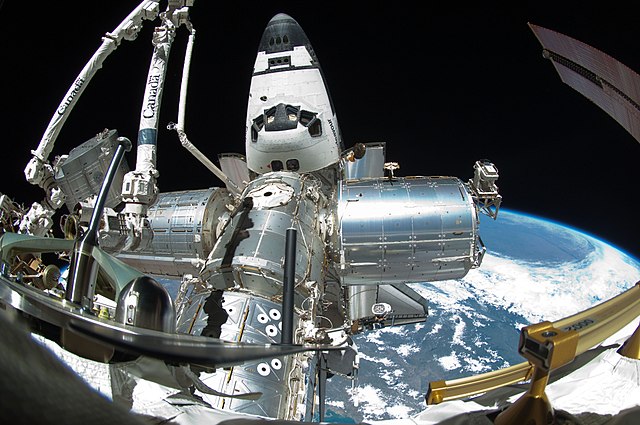The Mobile Servicing System (MSS), is a robotic system on board the International Space Station (ISS). Launched to the ISS in 2001, it plays a key role in station assembly and maintenance; it moves equipment and supplies around the station, supports astronauts working in space, and services instruments and other payloads attached to the ISS and is used for external maintenance. Astronauts receive specialized training to enable them to perform these functions with the various systems of the MSS.
Astronaut Stephen K. Robinson anchored to the end of the Canadarm2 during STS-114, 2005
Canadarm2 moves Rassvet to berth with the station on STS-132, 2010
Astronaut Leroy Chiao controlling Canadarm2 from the Destiny lab
The exterior of the Canadarm is clad with Kevlar fabric, while the arm itself is made from Titanium, pictured above Lake Balkhash.
International Space Station
The International Space Station (ISS) is a large space station assembled and maintained in low Earth orbit by a collaboration of five space agencies and their contractors: NASA, Roscosmos (Russia), JAXA (Japan), ESA (Europe), and CSA (Canada). The ISS is the largest space station ever built. Its primary purpose is to perform microgravity and space environment experiments.
Oblique underside view in November 2021
Comet Lovejoy photographed by Expedition 30 commander Dan Burbank
Expedition 8 Commander and Science Officer Michael Foale conducts an inspection of the Microgravity Science Glovebox
Fisheye view of several labs and the Space Shuttle








